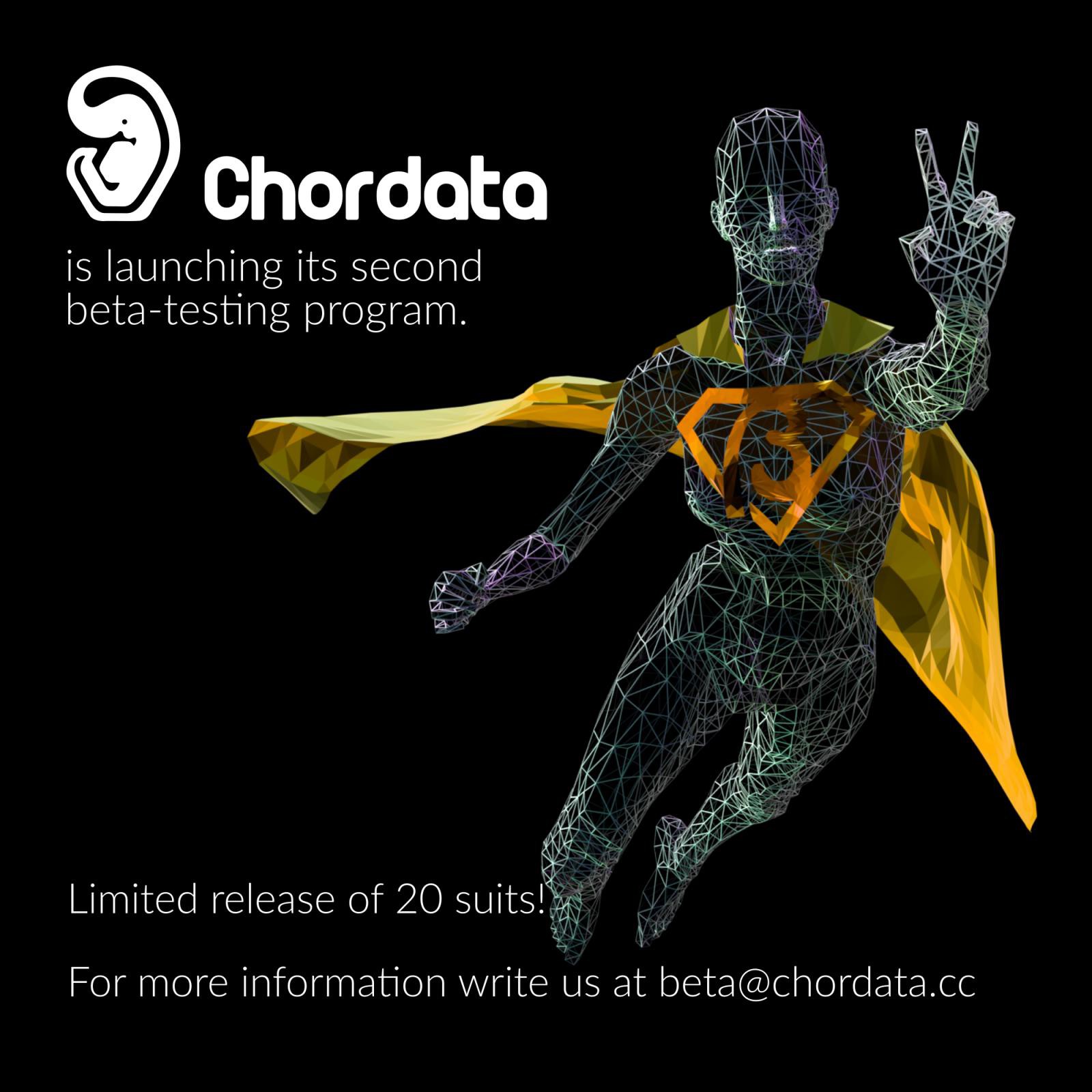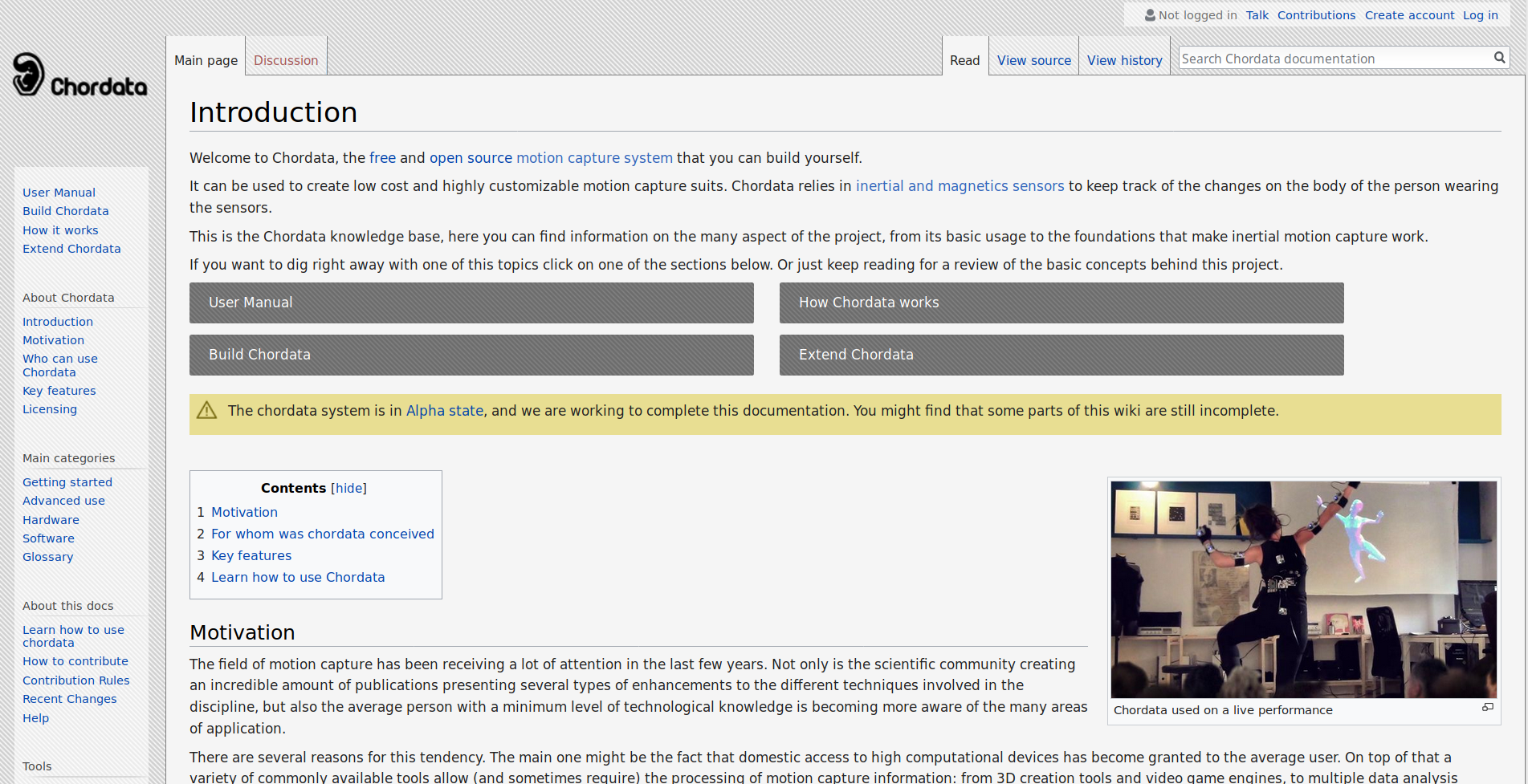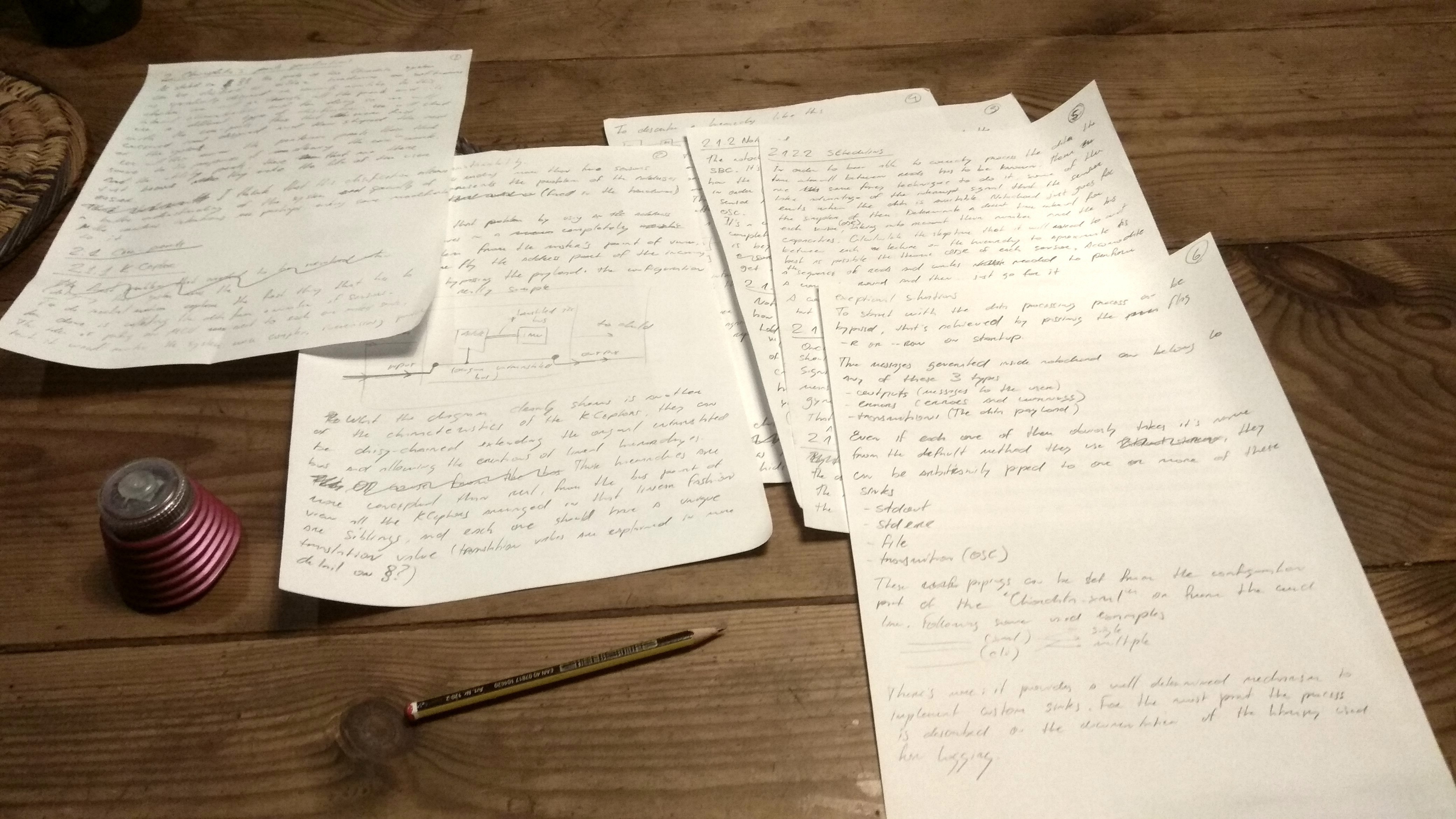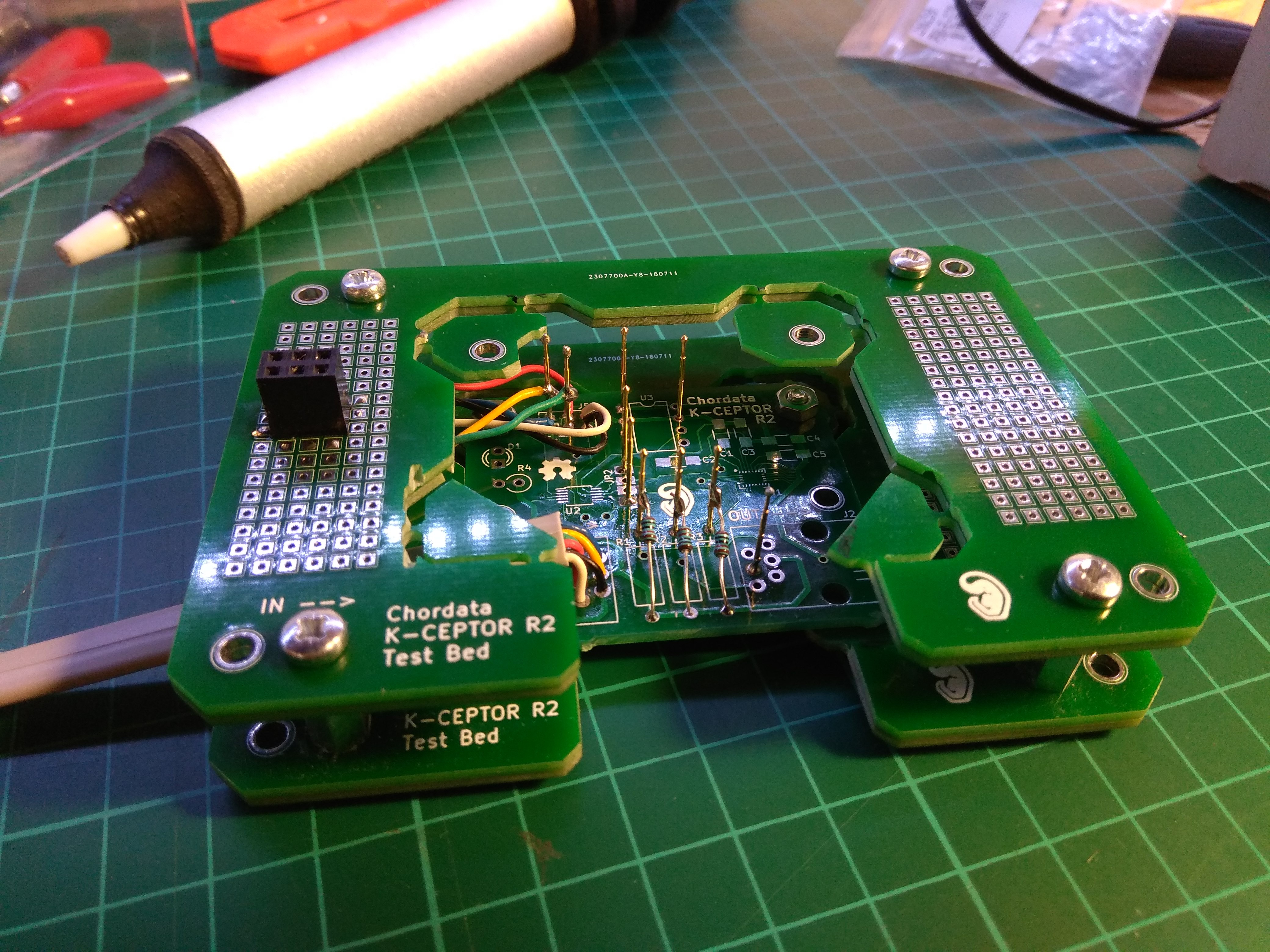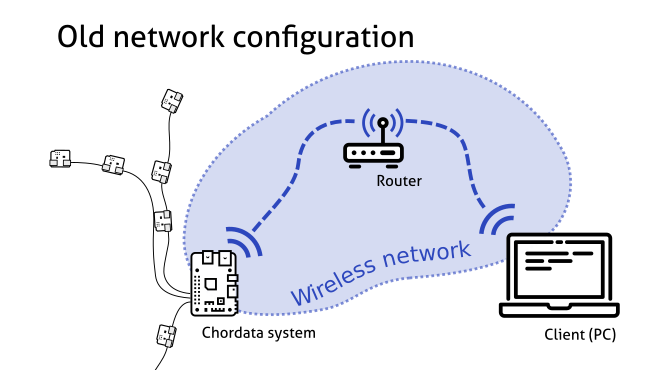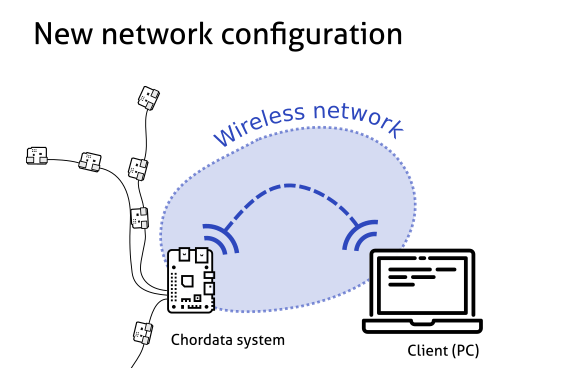-
Capture from a smartphone
09/12/2019 at 08:30 • 0 comments⚡ In the past months we were working on improving Chordata’s Remote Console, which allows you to capture data with in a much more easy way, even straight from your smartphone!
This improvement is something we’ve always desired, as Chordata is designed for both specialized users and beginners. With the Remote Console we’ll make the capture process simpler, thus allowing anyone to use our system easily!
Of course this is not a replacement for the "advanced" workflow, power users will still be able to access using tools as SSH.
Here's a demo of it's functionality:)
-
2nd Beta testing program
09/03/2019 at 13:46 • 0 comments![]()
We’re very excited to inform that we’re preparing a second Beta-testing Program!!!
You have asked for it so many times, that we decided it’s needed in order to honor your support. If selected, you’ll have access to a prototype of Chordata’s system at cost price.
This will be the second Beta-testing program we do before our official product launch. If everything goes as planned, Chordata suits will be available through our Tindie store in the first quarter of 2020!
Because of our current low-scale production method, we can only offer the system to 20 beta-testers.
Visit this page to know the details: https://chordata.cc/beta-testing/
-
0.1.1b Notochord software Release
05/21/2019 at 16:34 • 0 comments![]()
During the last weeks we've been working together with a group of betatesters on a new software release: Chordata's Notochord v0.1.1b is out!
Apart from many bug fixes, it can now read sensors at double the previous rate: up to 100Hz!
0.1.1b Changelog: ================= - "Scan" feature - Fix bug with acelerometer and gyroscope calibration - Validate acel and gyro calibration - Improve calibration CLI UX - Add higher Sensor data rate (experimental)
-
New hardware revision
02/12/2019 at 13:14 • 0 commentsA new revision of the hardware is available. Includes some fixes and minor changes :
- New EEPROM on K-Ceptor (M24C01)
- ID_module can be replaced for on-board resistors
- Pull-up resistors on i2c channels on Hub
- Fix Hub PCA9548 footprint
- Fix Hub gates pin order
![]()
-
The documentation is available!
10/21/2018 at 10:53 • 0 comments![]()
Dear hackers, we’re happy to inform you that after several weeks working on it, Chordata has its documentation available! Those of you who were eager to build your own motioncapture system, now have a dedicated learning material.
We choose to implement it as a wiki, since that type of content structure perfectly suits the Chordata philosophy: sharing and constructing knowledge together. So we’ll be glad to hear your suggestions, or receive your contributions to make a bigger and more useful knowledge base.
You can access the documentation at http://wiki.chordata.cc
A summary of the User Manual can be found on the instructions section of this project's page. And we have also uploaded here a pdf with a detailed description of how the Chordata system is implemented, it contains: parts specifications, functional diagrams, schematics, protocol descriptions, power considerations, and more. (We will be uploading that content to the wiki on the following days).
If you have no idea what the Chordata system is about you can just take a look to our new basic infographics.
Let us know what you think!
-
Upcoming documentation
09/28/2018 at 16:58 • 0 commentsThese days we are working hard to prepare the documentation. We are expecting to publish a big part of it by the end of October, so stay tuned for detailed explanations on how the system works and how it can be built!
In the meantime, we wanted to share with you an image of the cutting edge technology application we use for note-taking :P
![]()
-
Mocap as a sound controller
09/17/2018 at 09:00 • 0 commentsChordata was born several years ago with the idea of using it to create art from human motion. It took a long time of technical development, but now that the system is up and running we're having so much fun collaborating with several artists to test the possibilities of the system on different disciplines.
For example last weekend we were with our friends of Creative Coding Roma using the suit as a sound controller for Livecoding with Supercollider. Here's a little teaser of what we made:
Having the possibility of test it on real use cases and get feedback from real artists is invaluable to keep improving the usability and stability of the system!
A very special thank to Sergio and Valentina from Orange8, who provided us a really cool location in an old church for experimenting in Gaeta, Italy.
-
The testbed!
09/07/2018 at 08:47 • 0 commentsOne particularity on the development of this project is the amount of units needed on every prototype. Everytime we what to test something new we have to build around 15 sensing units (K-Ceptors). Anyone who has tried hand soldering SMD components know how easy is to get it wrong. So we are proud to introduce our new assistant in the lab: The testbed!
![]()
It allows us to troubleshoot the boards as soon as we take them out of the oven, saving us incredible amounts of time (and tears).
We would really like to thank Sparkfun Electronics for the inspiration they gave us by publishing their production process, and showing (amoung many other things) how they test their widgets with a pogobed.
-
New model topology and rigging
08/24/2018 at 14:02 • 0 commentsSince we’ve focused our communication efforts in an electronic-oriented website, we’ve been omitting an important part of our project: the 3D model and rigging we use to visualize the captures.
At the beginning we used a slightly modified version of a female model that we downloaded from blendswap.
The model was originally created by AlexanderLee and we really liked its shape, but it was not optimized for real time visualization, and the rigging didn’t match our requirements. This meant that Bruno (Chordata’s founder and a 3D animator himself) had to apply some changes on the fly and in a rush. Then, as it usually happens, we kept recycling the model that resulted from those quick changes.
That kept being a limitation until one day François showed up offering his 3D modeling and rigging skills. He did a great job adapting the model to be used in real-time motion capture.
The changes he made are subtle, and almost invisible to those who are not specialized on 3D modeling:
-Retopology: This is the process of rearranging the flow of polygons on a mesh to better respond to certain deformations. Check out the comparison images below: do you note how smooth the formation in the front area of the shoulder is with the new topology?
Old topology
New topology
-New skinning and weight paint: The “weights” are just values inside each vertex that determine the amount of deformation each bone produces. To correctly set these values a process similar to how spray painting is done. It’s a long process that requires continuous adjustments on several areas over and over again…
Thanks François for this great contribution! Even if the captures can be applied to any arbitrary model and rigging, having a good default one for visualization is a great improvement that will allow us to improve Chordata and test it in better conditions.
-
New network infrastructure
08/24/2018 at 13:53 • 0 commentsFrom the work done during our motion capture hackathon last month, our new collaborator Antonio Ianiero (iant ) made some interesting modifications to the networking infrastructure.
Before these, an external router (or smartphone as a hotspot) had to be used to create a small ad-hoc network, to which the microcomputer and the client PC had to connect.
![]()
Antonio saw this solution as impractical and inefficient. Instead he configured the microcomputer to act as an access point: on powering it exposes an SSID to which any WIFI capable device can connect.
![]()
In this way, not only do we eliminate unnecessary intermediate in the network, but also the portability of the system is considerably improved. For example, to capture in an external environment you only need to carry a laptop with charged batteries.
Thanks to Antonio for such a huge boost!
Motion Capture system that you can build yourself
An open hardware-software framework based on inertial sensors that anyone can use to build a human motion capture system.
 Bruno Laurencich
Bruno Laurencich